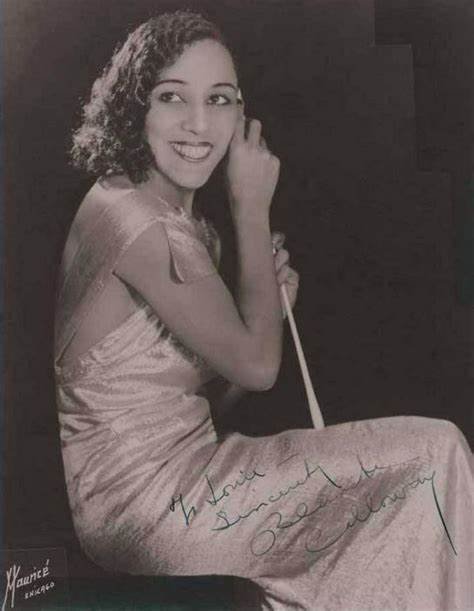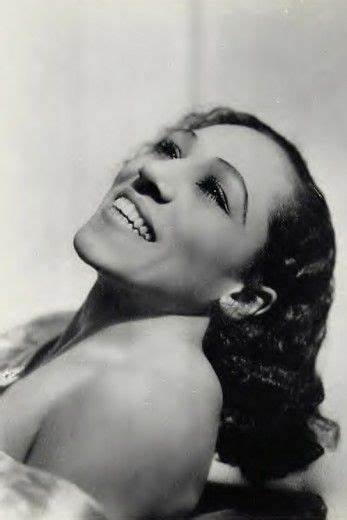Blanche Calloway, 1902-1978
Blanche Dorethea Jones Calloway made history many times in her 50-year-long performing career.
Blanche was the First African American woman to lead an all-male Jazz Orchestra in the 1930s.
A Little Background
Blanche Calloway was born in Baltimore, MD at 1017 Druid Hill Ave, home of her paternal grandparents, on February 9, 1902 to Martha and Cabell II Calloway. Blanche was the eldest of five children, Bernice, Henry, Cabell “Cab” Calloway III, and Elmer. While the family moved to Rochester for some time, they then returned to Baltimore when she was a teenager, where they lived first with her grandparents, Cabell I and Elizabeth Calloway, and then at 2216 Druid Hill Avenue. After her father’s death, Blanche’s mother remarried and had two additional children from that union.
The Road to the Stage
Blanche was known to be an incredible, charismatic performer, with a big personality. Her style and flair onstage was a huge inspiration for her younger brother, Cab Calloway, and she paved the way in show business for Cab.
Though her parents wanted her to pursue a more “respectable” career for a lady, Blanche dreamed of a career as a performer like her idols, Florence Mills and Ida Cox.
In 1921, Blanche quit school at Morgan College, and toured around the country with cabaret groups, including the Smarter Set Co. In that same year, she made her professional debut in the first all-Black musical hit on Broadway, “Shuffle Along” written by Noble Sissle and fellow Baltimorean Eubie Blake, where she joined an all-star cast including Florence Mills, Josephine Baker, Paul Robeson, among others.
Blanche Calloway and her Joy Boys Orchestra
Blanche formed her own orchestra in two iterations, in the 1920s and 1930s respectively, becoming the first African American female to conduct an all-male Jazz orchestra.
She made her first recordings in 1925 with her “Joy Boys”, with a young Louis Armstrong on Cornet playing songs she composed herself, including Lonesome Lovesick Blues.
During the 1930s Blanche and Her Joy Boys, including Chick Webb, Cozy Cole, Bennie Moter and others, toured worldwide and performed extensively in New York at the Apollo Theater, Harlem Opera House, and the Lafayette Theater.
Shuffling Along to Chicago
Blanche’s most pivotal performance engagement came in 1923 when she joined the national traveling tour of Plantation Days. The tour ended in 1927 in Chicago.
After graduating high school, Cab Calloway joined his sister on the Plantation Days tour.
Blanche decided to remain in The Windy City, performing regularly at the Sunset Café, the club where she secured an additional performance spot for her younger brother, Cab. It is impossible to speak of Blanche without noting the influence that she had on Cab as an artist and vice versa.
Cab’s 1976 memoir acknowledges his sister’s influence, describing Blanche as “vivacious, lovely, personality plus and a hell of a singer and dancer…fabulous, happy and extroverted.”
Hi, hi, hi & Minnie
Blanche recorded “Just a Crazy Song (Hi, Hi, Hi) in March of 1931 with the call and response refrain “Hi, de, Ho,” the same month that Cab Calloway recorded his chart-topping single Minnie the Moocher, which contains the same iconic refrain. She also composed and recorded “Growling Dan”, a song containing Minnie the Moocher in the lyrics.
Blanche singing “Just a Crazy Song (Hi, Hi, Hi)”
Cab singing “Minnie, the Moocher”
Blanche singing “Growling Dan”
The Latter Years
After she stopped performing on a full-time basis in the 1950s, Blanche pursued many career paths.
She was a Democratic Committee Person in Philadelphia, a musical agent in Washington, D.C., a DJ for WMBM in Florida and a program director for the same station — a job she held for 20 years before she moved back to Baltimore — and she started her own cosmetics company serving African Americans.
When living in D.C., Blanche worked as the musical agent to Ruth Brown, often referred to as “the Queen of R&B”, who credits Blanche with discovering her and getting her signed with Atlantic Records.
Blanche was the first African American voting clerk in Florida and she was the first African American woman to vote in Florida in 1958.
Before her death in 1978 at the age of 76, Blanche was active in Civil Rights organizations such as the NAACP (The National Association for the Advancement of Colored People), Congress for Racial Equality, and the National Urban League.
Ruth Brown singing “Hey Mama, He Treats Your Daughter Mean.”






